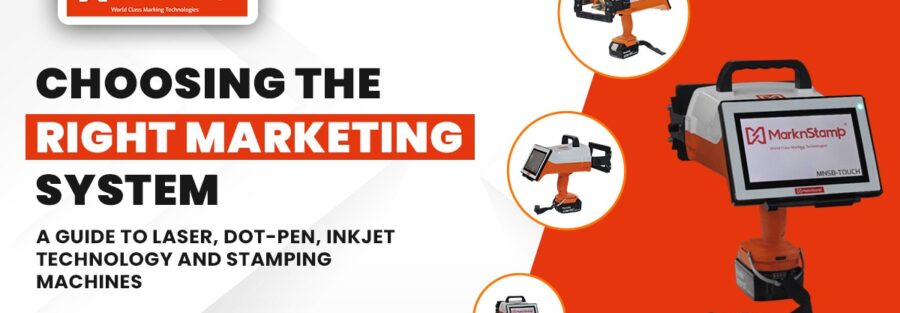Deciding on the correct marking system will dramatically affect your manufacturing processes, traceability, and compliance with regulations. This guide explores three prominent technologies: laser marking, dot pin marking machine, and inkjet marking techniques. We also touch upon the stamper machine and its role in marking applications. Here, we will discuss the general uses, benefits, and drawbacks of each marking technique.
Understanding Marking Technologies
Dot Peen Marking
Dot-peen marking technology is a method in which a small, hard stylus is used to indent on the material surface by making a great number of dots in sequence. This method is highly recommended because it makes body art sentiments last permanently and come out legible even in rough terrain.
Advantages of Dot Peen Marking:
Durability: Dot-peen machines will not wear off or fade away easily because of the environment. This makes it ideal for use in automobile industries, aircraft industries, and many other fields where there is high importance of identity.
Flexibility: Dot-peen systems can operate on irregular surfaces and are controllable for depth and types of patterns depending on requirement.
Cost-effective: While initial costs of dot pin marking machines can be lower than laser systems, the cost for maintenance of dot pin marking machines must also be taken into consideration.
Limitations:
Speed: Dot-peen marking is slightly slower compared to laser marking and hence may not be ideal for applications where speed forms the bulk of the processes, like the automotive industry.
Mark Clarity: Despite this, the Dot Pin Marking Machine clarity of marks can be less clear occasionally to laser markings, particularly if the angle of incidence is changed or the light intensity is low.
Laser Marking
Laser marking uses an intense laser beam to scribe into the surface of the material, leading to high-contrast markings. This is a very accurate technology and is able to label a number of types of material, such as metals, plastics, glass, and even organic materials.
Advantages of Laser Marking:
Precision: The performance of laser systems is highest in terms of producing crisp and highly recognizable marks. It is an indication that they can create more detailed designs and fine work, such as small text sizes that systems for dot peening might find challenging.
Speed: Compared to dot-peen marking, laser marking is quicker and may take anywhere from a fraction of a second to perform a series of operations.
Versatility: Laser markers can mark on diverse kinds of material and do not depend on surface texture, which makes them ideal to use on sensitive or intricate shapes.
Limitations:
Initial Cost: Laser marking systems have higher upfront costs compared to dot peen or stamper machines, but they often incur lower long-term expenses.
Heat Generation: The process involves heat, which can pose a problem to heat-sensitive products and components. Also, it yields emissions, which may necessitate exhaust facilities.
Inkjet Marking
Inkjet marking technology, on the other hand, uses ink in the form of a liquid to put marks on products or their containers. It can be used for labeling and other purposes of coding in many different industries.
Advantages of Inkjet Marking:
Speed: An advantage of inkjet systems is that they have high print rates of large areas—very useful in production lines where time is important.
Cost Efficiency: When it comes to the application of inkjet with less requirement on the durability of the product and area to be marked, the cost outlay in inkjet is even lower than laser and dot-peen systems.
Limitations:
Durability: Inkjet indications may be less readily lasting or durable to temperature level, light, and other conditions compared to dot peen or laser markings.
Surface Limitations: The inkjet form of printing needs flat surfaces, which allows a proper placement; rough surfaces hinder the quality of printing.
Drawbacks:
Customization Limitations: Less adaptable to intricate or variable designs compared to laser and dot-peen systems.
Wear and Tear: Physical stamps may degrade over time, impacting marking quality.
Conclusion
In conclusion, the marking machines have to be selected depending on the characteristics of the manufacturing process you encounter. dot pin marking, laser marking, and inkjet marking, though each of the machines has its advantages and limitations. This way of properly comparing the requirements to these attributes allows for the ability to choose the system that improves production alongside quality and adherence to regulations in your processes.
FAQs
What are the primary applications of dot peen technology?
Dot-peen technology provides an industrial applicability of marking metals, plastics, and other rigid surfaces.
Which technology offers the best durability for markings?
Laser marking was found to deliver the most permanent markings that could not fade away or be rubbed off easily by wear and tear.


